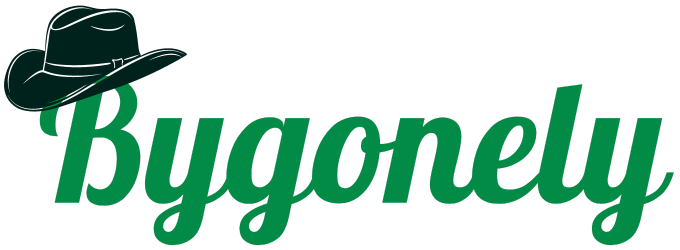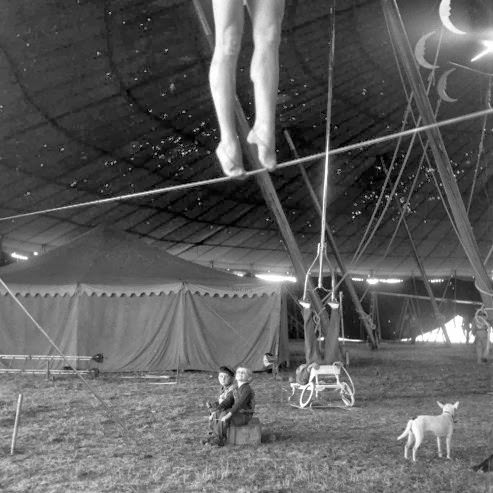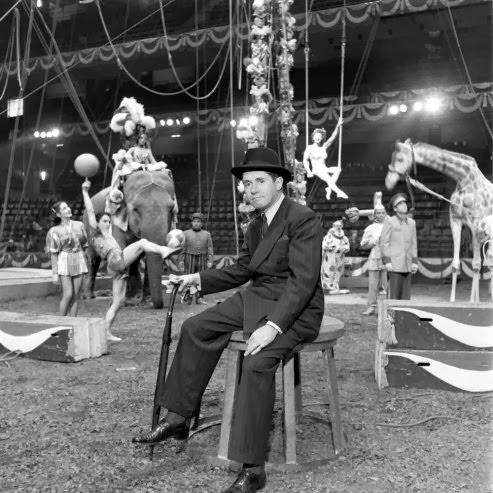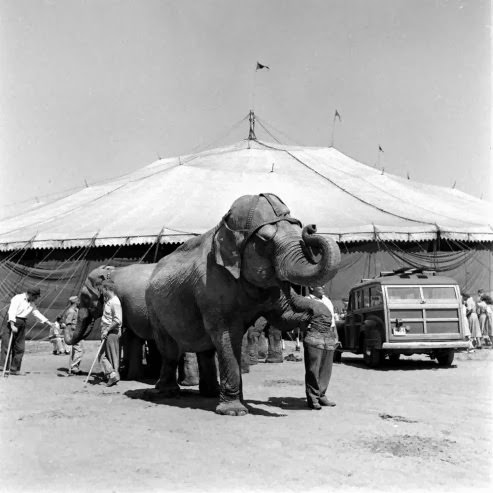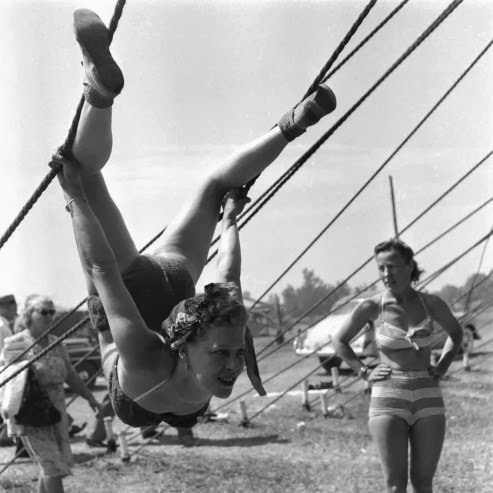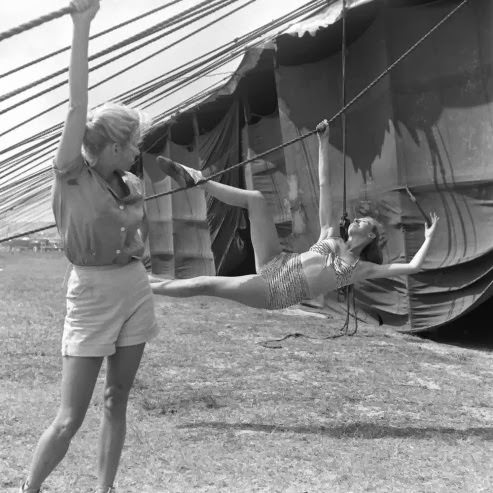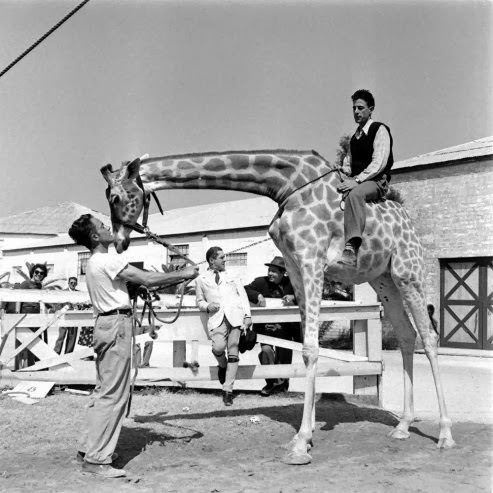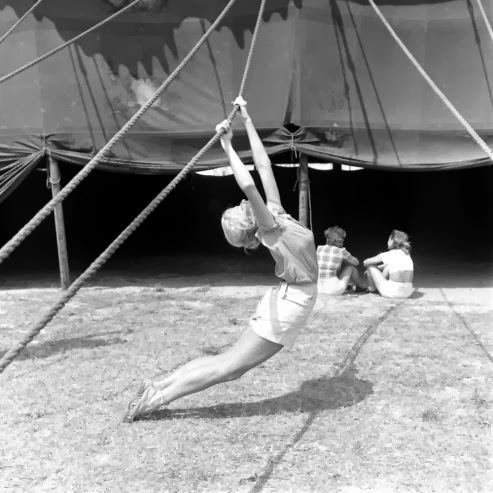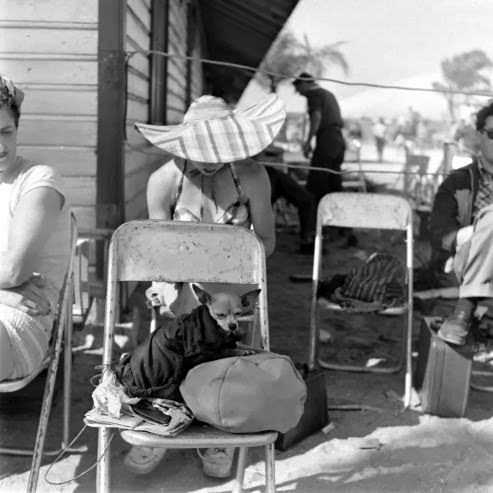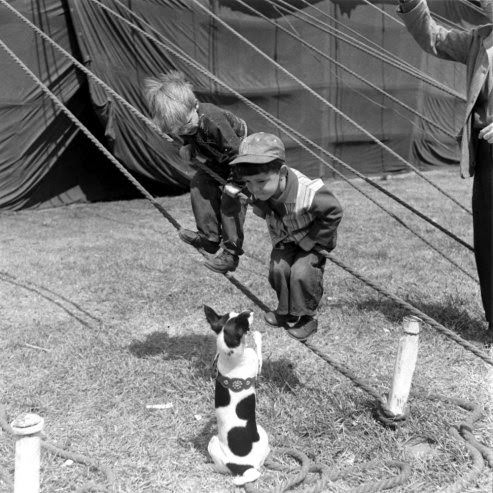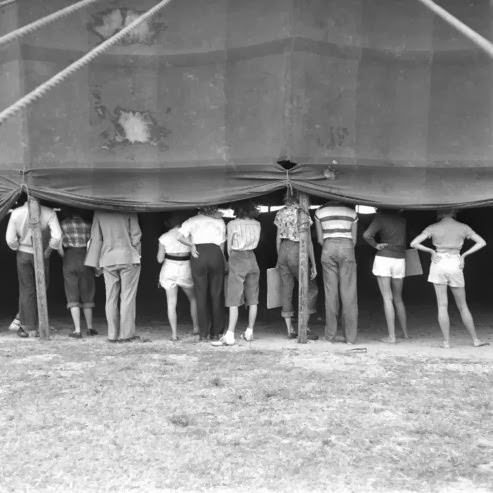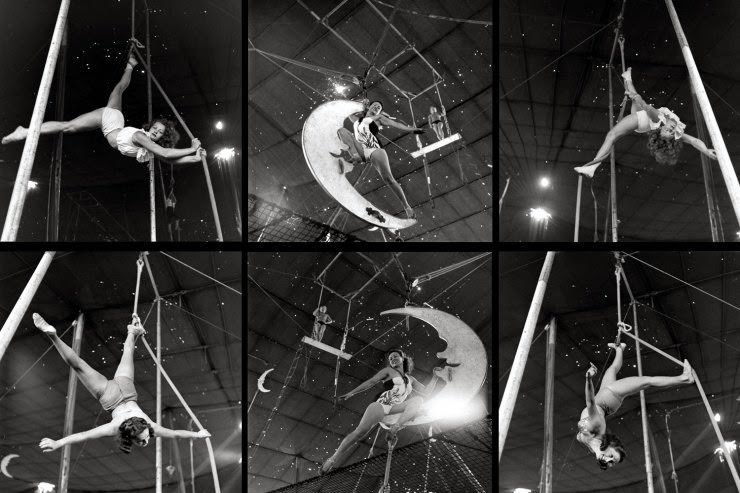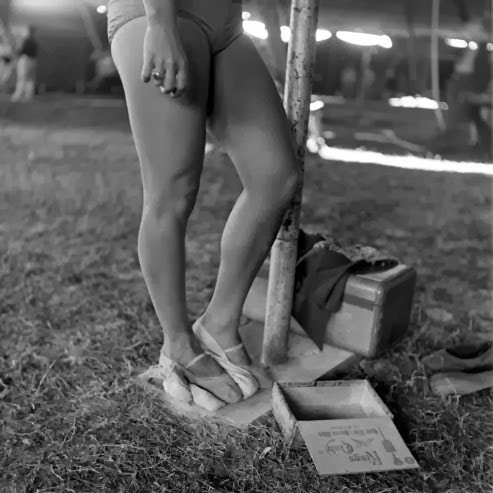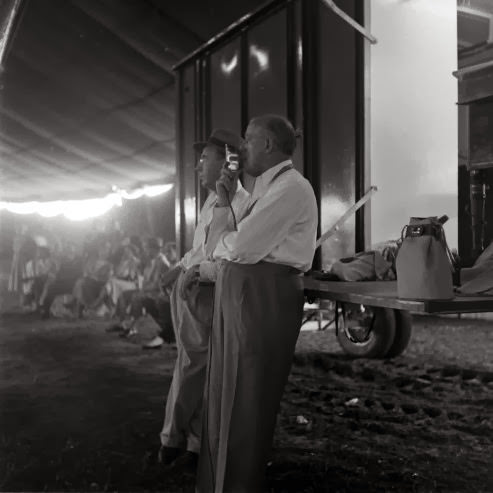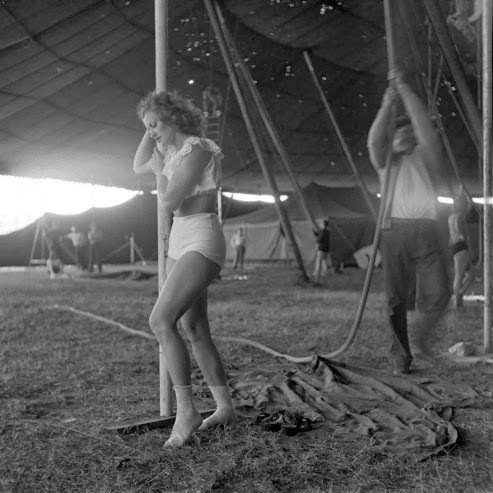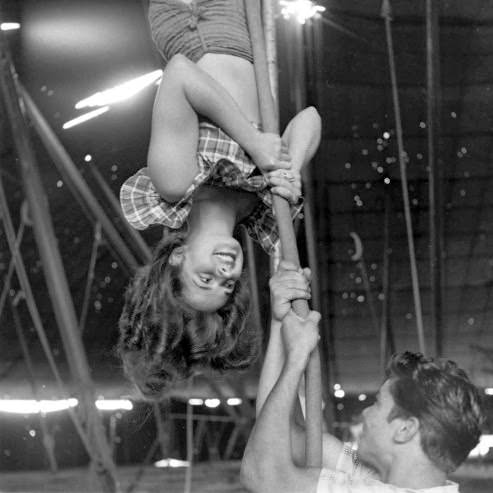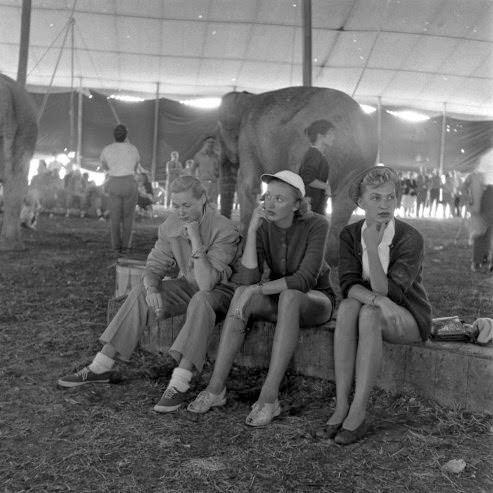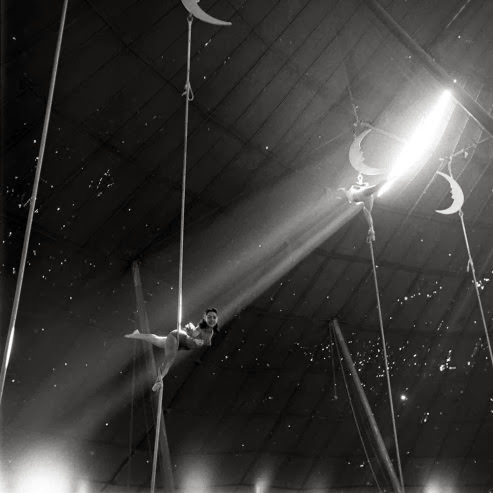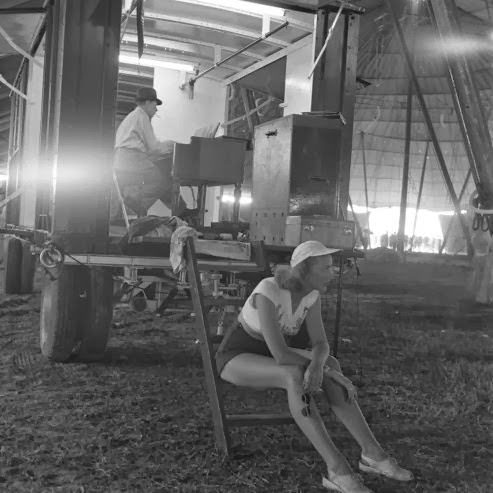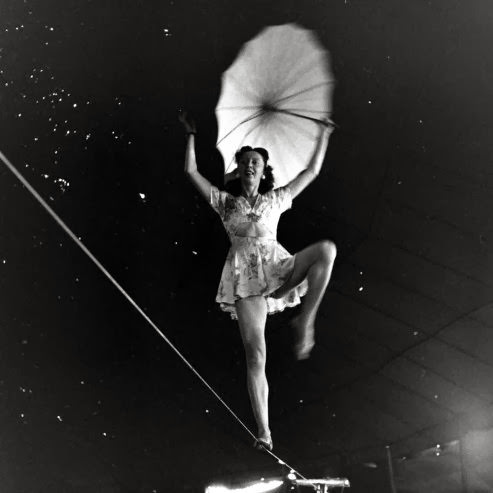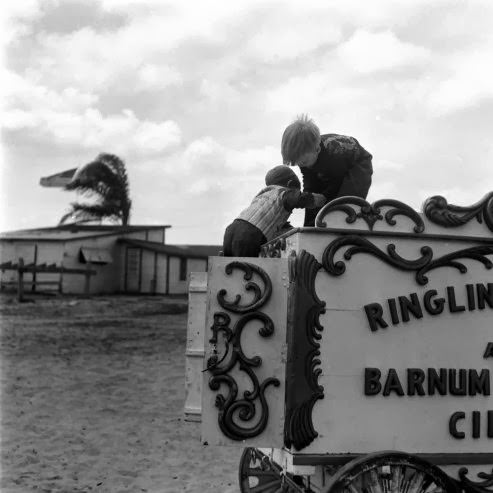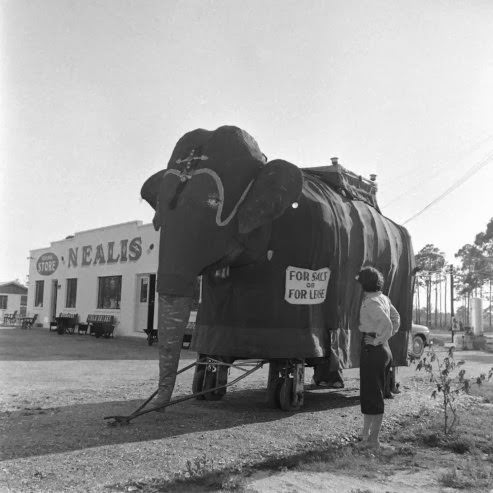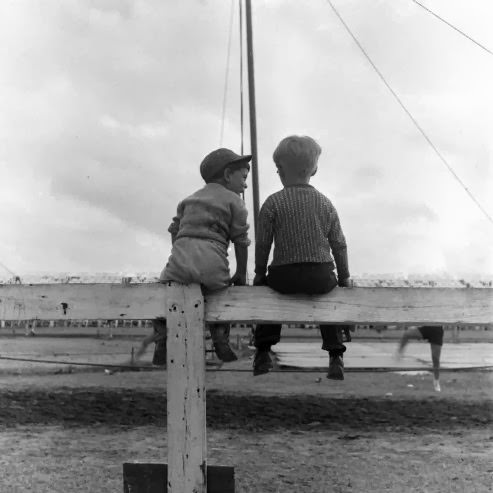In 1949, the arrival of the Ringling Bros. and Barnum & Bailey Circus in a new town was a highly organized spectacle. The circus traveled across America on its own train, a miles-long caravan of specialized railroad cars that served as both transportation and living quarters for the hundreds of performers and workers.
The circus train would pull into town in the early hours of the morning. A team of workingmen, known as roustabouts, would immediately begin the process of unloading. Ramps were lowered from the flatcars, and teams of horses were used to haul the brightly painted wagons, cages, and equipment through the streets to the showgrounds, an open lot on the edge of town. This procession often served as an unofficial parade, alerting the townspeople that the circus had arrived.
Once at the showgrounds, the most crucial task began: raising the main tent, known as the “Big Top.” This enormous canvas structure was the heart of the circus. Under the direction of a foreman, the roustabouts would spread the heavy canvas across the ground. Using sledgehammers in a rhythmic motion, they drove hundreds of stakes into the earth. With a system of ropes, poles, and manpower, the massive tent was slowly hoisted into the air, creating a temporary city dedicated to entertainment.
Read more
Life for the circus performers was a routine of practice and performance. The stars of the show, like the aerialists and high-wire acts, would practice their dangerous routines daily to ensure perfection. Clowns would work on their gags and makeup in a shared dressing tent. The animal trainers would feed and exercise the elephants, horses, and big cats. Many of the performers came from multi-generational circus families and had been training for their acts since childhood.
The area behind the main tent, known as the backyard, was a bustling community. It had its own social structure, with a clear hierarchy from the star performers to the showgirls and workingmen. There was a mobile kitchen, called the cookhouse, that served hundreds of meals three times a day. Performers lived in the customized railroad cars, which were their homes for most of the year.
By the afternoon, the circus grounds were transformed. The main show took place under the Big Top, a three-ring spectacle featuring dozens of acts performing at the same time. The air was filled with the sounds of a live brass band, the smell of popcorn and animals, and the roar of the crowd. Popular acts in 1949 included the flying trapeze artists, troupes of acrobats, large-scale animal performances with elephants and tigers, and dozens of clowns piling out of a tiny car.
After the final evening performance, the entire process was reversed. The roustabouts would work through the night to dismantle the Big Top and all the other tents. The wagons and cages were loaded back onto the train. By the next morning, the circus would be gone, on its way to the next town on the tour.
